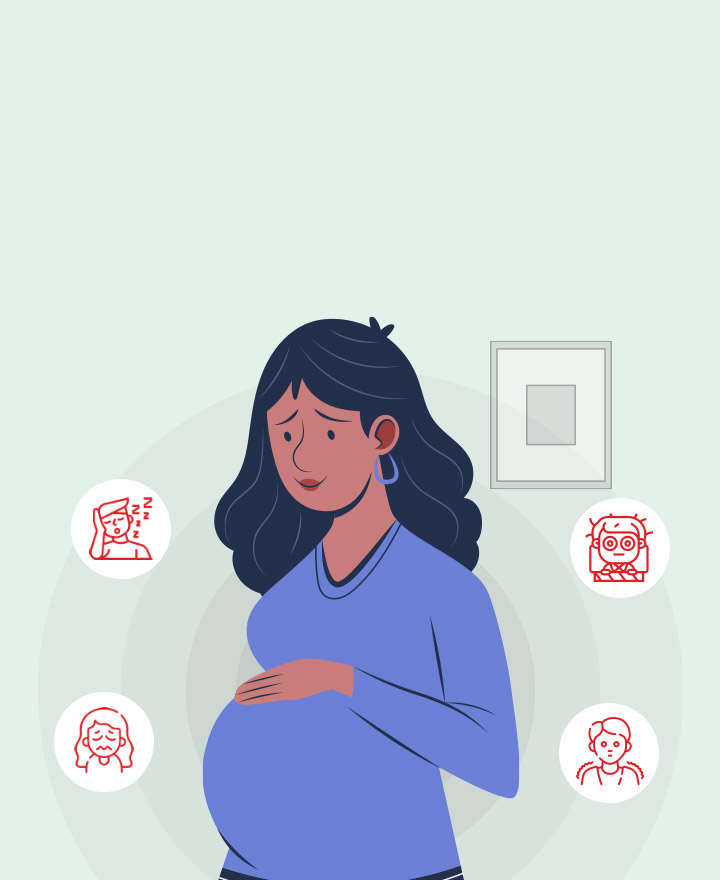The Indonesian Self-Efficacy Questionnaire for Children: Translation, Cross-Cultural Adaptation, and Psychometric Evaluation

Downloads
Introduction: This study aimed to translate and validate the Self-Efficacy Questionnaire (SEQ-C) and its subscale for Indonesian adolescents, which has potential implications for bullying prevention.
Methods: Cross-cultural adaptation was carried out using the Beaton guidelines. An assessment of psychometric testing was carried out during January and February 2024. The eligibility criteria for participants were students aged 13 to 15. Students who declined to participate were excluded. The research involved 120 children. Testing the questionnaire's structural factors used Confirmatory Factor Analysis (CFA). IBM SPSS 25 and AMOS 29 were used for the analysis.
Results: Following the criteria established for CFA, two items (ASE10 and SSE18) were eliminated due to their low factor loadings. This resulted in a refined SEQ-C structure of 22 items distributed across three factors. The alpha reliability coefficients showed robust internal consistency for the entire scale at first test and retest (α=0.884; α =0.911) and for each of the three subscales (all >0.80). The model fit indices indicated satisfactory values for the Comparative Fit Index (CFI)=0.906; Root Mean Square Error of Approximation (RMSEA)=0.063; and the Minimum Discrepancy Function by Degrees of Freedom divided (CMIN/DF)=1.474).
Conclusion: The SEQ-C emerges as a trustworthy and valid tool for evaluating self-efficacy across three key components: intellectual, social, and emotional. It can assess adolescent self-efficacy for research, education, and nursing interventions, as part of enhancing the life skills of adolescents.
Armitage, R. (2021) ‘Bullying in children: Impact on child health’, BMJ Paediatrics Open, 5(1), pp. 1–8. doi: 10.1136/bmjpo-2020-000939.
Bandura, A. (1997) Self-Efficacy, W.H Freeman and Company.
Bandura, A. (2006) ‘Guide to the construction of self-efficacy scales’, Self-efficacy beliefs of adolescents, pp. 307–337.
Beaton, D. E. et al. (2000) ‘Guidelines for the process of cross-cultural adaptation of self-report measures’, Spine, 25(24), pp. 3186–3191. doi: 10.1097/00007632-200012150-00014.
Bollen, K. A. (1989) ‘A New Incremental Fit Index for General Structural Equation Models’, Sociological Methods & Research, 17(3), pp. 303–316. doi: 10.1177/0049124189017003004.
Brown, T. A. (2015) Confirmatory Factor Analysis for Applied Research. second edi. New York: The Guilford Press.
Byrne, B. M. (2010) Structural Equation Modeling With AMOS: Basic Concepts, Applications, and programming. 2nd ed, Taylor and Francis Group. 2nd ed. doi: 10.4324/9781410600219.
Centers for Disease Control and Prevention (2019) ‘Positive Parenting Tips for Healthy Child Development, Middle Childhood (12-14 years of age)’, pp. 1–3.
Chen, X. et al. (2021) ‘Parental behavioral control and bullying and victimization of rural adolescents in china: The roles of deviant peer affiliation and gender’, International Journal of Environmental Research and Public Health, 18(9). doi: 10.3390/ijerph18094816.
Chen, Y. et al. (2023) ‘Belief in a just world and bullying defending behavior among adolescents: Roles of self-efficacy and responsibility’, Current Psychology, 42(25), pp. 21532–21540. doi: 10.1007/s12144-022-03198-5.
Cikrikci, Ö. and Odaci, H. (2016) ‘The Determinants of Life Satisfaction Among Adolescents: The Role of Metacognitive Awareness and Self-Efficacy’, Social Indicators Research, 125(3), pp. 977–990. doi: 10.1007/s11205-015-0861-5.
Curran, P. J., West, S. G. and Finch, J. F. (1996) ‘The robustness of test statistics to nonnormality and specification error in confirmatory factor analysis.’, Psychological Methods, 1(1), pp. 16–29. doi: 10.1037//1082-989x.1.1.16.
Duan, S. et al. (2020) ‘Bullying victimization, bullying witnessing, bullying perpetration and suicide risk among adolescents: A serial mediation analysis’, Journal of Affective Disorders, 273(February), pp. 274–279. doi: 10.1016/j.jad.2020.03.143.
Fischer, S. M., John, N. and Bilz, L. (2021) ‘Teachers’ Self-efficacy in Preventing and Intervening in School Bullying: a Systematic Review’, International Journal of Bullying Prevention, 3(3), pp. 196–212. doi: 10.1007/s42380-020-00079-y.
Fürtjes, S. et al. (2023) ‘Self-efficacy, stress, and symptoms of depression and anxiety in adolescents: An epidemiological cohort study with ecological momentary assessment’, Journal of Mood & Anxiety Disorders, 4, p. 100039. doi: https://doi.org/10.1016/j.xjmad.2023.100039.
Güçlü-Aydogan, M., Ünal-Aydın, P. and Aydın, O. (2023) ‘The Effects of Psychological Resilience, Self-efficacy and Metacognition on Cyberbullying Among Adolescents’, Child and Adolescent Social Work Journal. doi: 10.1007/s10560-023-00946-9.
Habibi, M., Tahmasian, K. and Ferrer-Wreder, L. (2014) ‘Self-Efficacy in Persian Adolescents: Psychometric Properties of a Persian Version of the Self-Efficacy Questionnaire for Children (SEQ-C)’, International Perspectives in Psychology, 3(2), pp. 93–105. doi: 10.1037/a0036059.
Hair Jr, J. F. et al. (2019) Multivariate Data Analysis (Eighth Edition). Eighth. Hampshire, UK: Annabel Ainscow.
Haraldstad, K. et al. (2019) ‘Associations between self-efficacy, bullying and health-related quality of life in a school sample of adolescents: A cross-sectional study’, BMC Public Health, 19(1), pp. 1–9. doi: 10.1186/s12889-019-7115-4.
Kim, Y., Kim, K. and Lee, S. (2017) ‘Testing the Self-Efficacy Questionnaire With Korean Children in Institutionalized Care’, Research on Social Work Practice, 27(6), pp. 734–742. doi: 10.1177/1049731515606219.
Liu, T. et al. (2020) ‘Child victimization in China: Prevalence and links to family contextual characteristics using a representative sample’, Children and Youth Services Review, 112(February), p. 104919. doi: 10.1016/j.childyouth.2020.104919.
Maneesriwongul, W. and Dixon, J. K. (2004) ‘Instrument translation process: a methods review’, Journal of Advanced Nursing, 48(2), pp. 175–176. doi: 10.1001/archotol.1987.01860040098030.
Mei, S. et al. (2021) ‘Association between bullying victimization and symptoms of depression among adolescents: A moderated mediation analysis’, International Journal of Environmental Research and Public Health, 18(6). doi: 10.3390/ijerph18063316.
Menesini, E. and Salmivalli, C. (2017) ‘Bullying in schools: the state of knowledge and effective interventions’, Psychology, Health and Medicine, 22, pp. 240–253. doi: 10.1080/13548506.2017.1279740.
Mousset, E. S.-P. et al. (2024) ‘Association between self-efficacy and anxiety symptoms in adolescents: Secondary analysis of a preventive program’, Social and Emotional Learning: Research, Practice, and Policy, 3(July 2023), p. 100040. doi: 10.1016/j.sel.2024.100040.
Muris, P. (2001) ‘A Brief Questionnaire for Measuring Self-Efficacy in Youths’, Journal os Psychopathology and Behavioral Assessment, 23(3), pp. 145–149.
Muris, P. (2002) ‘Relationships between self-efficacy and symptoms of anxiety disorders and depression in a normal adolescent sample’, Personality and Individual Differences, 32(2), pp. 337–348. doi: 10.1016/S0191-8869(01)00027-7.
Nunnally, J. C. and Bernstein, I. H. (1994) Psychometric Theory. 3rd editio. New York, USA: McGRAW-HILL, Inc.
Olweus, D. (1994) ‘Bullying at School: Basic Facts and Effects of a School Based Intervention Program’, Journal of Child Psychology and Psychiatry, 35(7), pp. 1171–1190. doi: 10.1111/j.1469-7610.1994.tb01229.x.
Peker, A., Eroglu, Y. and Nebioglu Yildiz, M. (2021) ‘Does High Self-Efficacy in Adolescents Minimize Cyber Bullying Behaviour?’, Clinical and Experimental Health Sciences, 11(1), pp. 140–145. doi: 10.33808/clinexphealthsci.864038.
Sivaraman, B., Nye, E. and Bowes, L. (2019) ‘School-based anti-bullying interventions for adolescents in low- and middle-income countries: A systematic review’, Aggression and Violent Behavior, 45(July 2018), pp. 154–162. doi: 10.1016/j.avb.2018.07.007.
Sousa, V. D. and Rojjanasrirat, W. (2011) ‘Translation, adaptation and validation of instruments or scales for use in cross-cultural health care research: A clear and user-friendly guideline’, Journal of Evaluation in Clinical Practice, 17(2), pp. 268–274. doi: 10.1111/j.1365-2753.2010.01434.x.
Suldo, S. M. and Shaffer, E. J. (2007) ‘Evaluation of the self-efficacy questionnaire for children in two samples of American adolescents’, Journal of Psychoeducational Assessment, 25(4), pp. 341–355. doi: 10.1177/0734282907300636.
Supervía, U. P., Bordás, S. C. and Robres, Q. A. (2022) ‘The mediating role of self-efficacy in the relationship between resilience and academic performance in adolescence’, Learning and Motivation, 78(April). doi: 10.1016/j.lmot.2022.101814.
Tan, S. K. and Chellappan, K. (2018) ‘Assessing the validity and reliability of the self-efficacy questionnaire for children (Seq–c) among malaysian adolescents: Rasch model analysis’, Measurement and Evaluation in Counseling and Development, 51(3), pp. 179–192. doi: 10.1080/07481756.2018.1435192.
UNESCO (2019) Behind the numbers: ending school violence and bullying, UNESCO. Edited by UNESCO. France: UNESCO. doi: https://doi.org/10.54675/TRVR4270.
Xie, H. and Ngai, S. S. yum (2020) ‘Participant roles of peer bystanders in school bullying situations: Evidence from Wuhan, China’, Children and Youth Services Review, 110(October 2019), p. 104762. doi: 10.1016/j.childyouth.2020.104762.
Xie, H., Shlonsky, A. and Harrigan, S. (2023) ‘Psychometric evaluation of the self-efficacy questionnaire for children (SEQ-C): validation among Chinese children and adolescents’, Current Psychology, 42(21), pp. 18405–18418. doi: 10.1007/s12144-022-03046-6.
Zhang, H. et al. (2019) ‘Bullying victimization and depression among left-behind children in rural China: Roles of self-compassion and hope.’, Child abuse & neglect, 96, p. 104072. doi: 10.1016/j.chiabu.2019.104072.
Zych, I., Farrington, D. P. and Ttofi, M. M. (2019) ‘Protective factors against bullying and cyberbullying: A systematic review of meta-analyses’, Aggression and Violent Behavior, 45(July 2018), pp. 4–19. doi: 10.1016/j.avb.2018.06.008.
Copyright (c) 2025 Jurnal Ners

This work is licensed under a Creative Commons Attribution 4.0 International License.
Authors who publish with Jurnal Ners agree to the following terms:
- Authors transfer the Copyright and grant Jurnal Ners the right of first publication with the work simultaneously licensed under a Creative Commons Attribution 4.0 International License that allows others to remix, adapt and build upon the work with an acknowledgment of the work's authorship and of the initial publication in Jurnal Ners.
- Authors are permitted to copy and redistribute the journal's published version of the work (e.g., post it to an institutional repository or publish it in a book), with an acknowledgment of its initial publication in Jurnal Ners.
Jurnal Ners requires a formal written declaration and transfer of copyright from the author(s) for each article published. We, therefore, ask you to complete and return this form, retaining a copy for your own records. Your cooperation is essential and appreciated. Any delay will result in a delay in publication. The form can be downloaded HERE.































